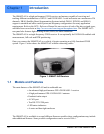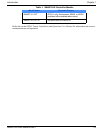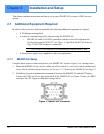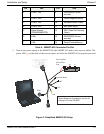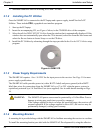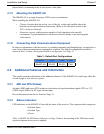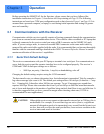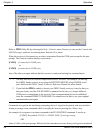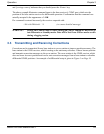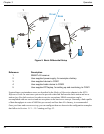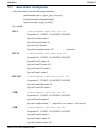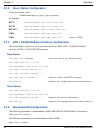
Installation and Setup Chapter 2
SMART-AG User Manual Rev 2 25
2.2.4 Emulated Radar (ER)
The SMART-AG outputs an emulated RADAR signal via the bare wires labeled ER GND and
ER_OUT on the SMART-AG cable. See Table 7 on Page 54 for the pin-out details of this cable.
The ER outputs a logic high of supply voltage-0.5V minimum and logic low of 0.5V maximum with a
rise and fall time of less than 1 ms. Its output references signal GND and provides logic low output
until its speed is greater than 1 km/Hr. It provides an output frequency that represents 36.11 Hz/km/Hr
with an effective range from 1 km/Hr to 55 km/Hr for near-horizontal applications. Please see
Appendix B.4, RADARCFG Configure the ER Output starting on Page 64 for more information.
2.2.5 NEMA Standards
NEMA 2000 is a CAN standard created by the National Marine Electronics Association and designed
to support networking in marine applications. It functions over a longer physical distance, and
supports more physical nodes than ISO 11783. The relationship between NMEA2000 and SAE J1939
is that J1939 is the standard, while the NMEA 2000 group has added some new messages (called
PGNs or Parameter Group Numbers) and added a new, additional transport protocol called
FastPacket. NMEA2000 compliant, for all intents and purposes, means J1939 compliant plus support
for new NMEA2000 messages. In other word, one cannot have NMEA2000 without J1939 support as
well. J1939 is additionally “harmonized” with ISO 11783, a standard for the agriculture industry.
The CAN module is generally not user-interactive. It is activated when a SETCANNAME command
is entered, and after a SAVECONFIG, the CAN module is activated immediately on all subsequent
start-ups. The module supports NMEA2000 Parameter Group Message (PGN):
• PGN 129029 GNSSPositionData
• PGN 129025 GNSSPositionRapidUpdate
• PGN 129026 COGandSOGRapidUpdate
Table 5: Available CAN Signals on the SMART-AG
CAN Pins
CANI+ Pin 6
CANI- Pin 7




